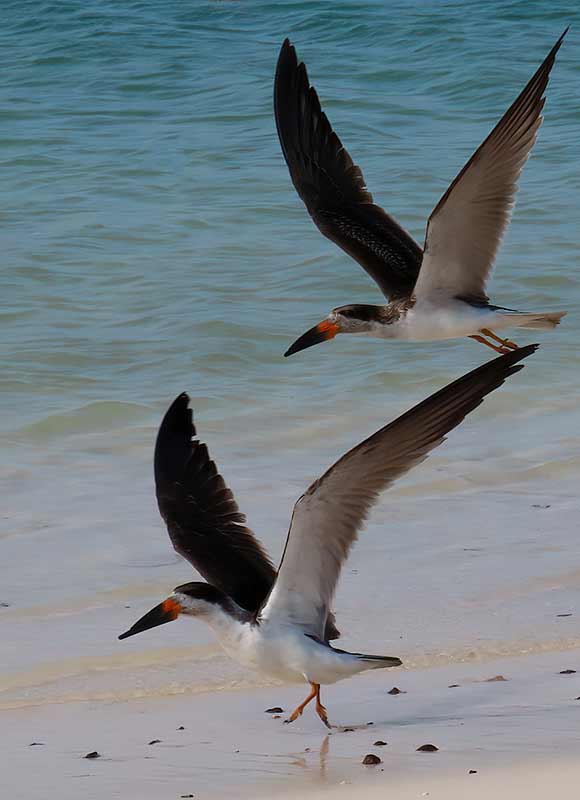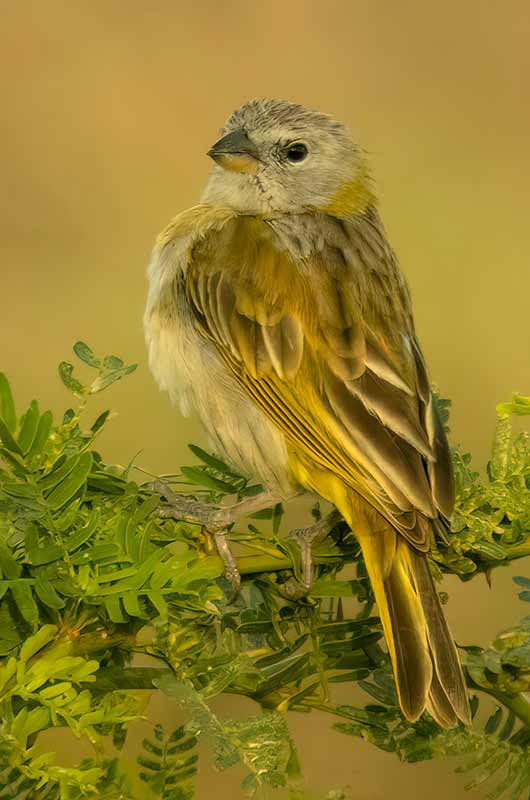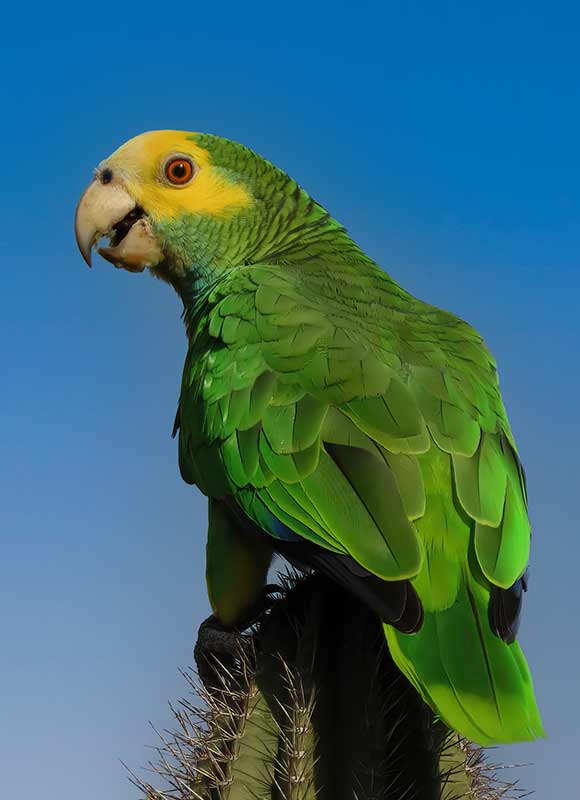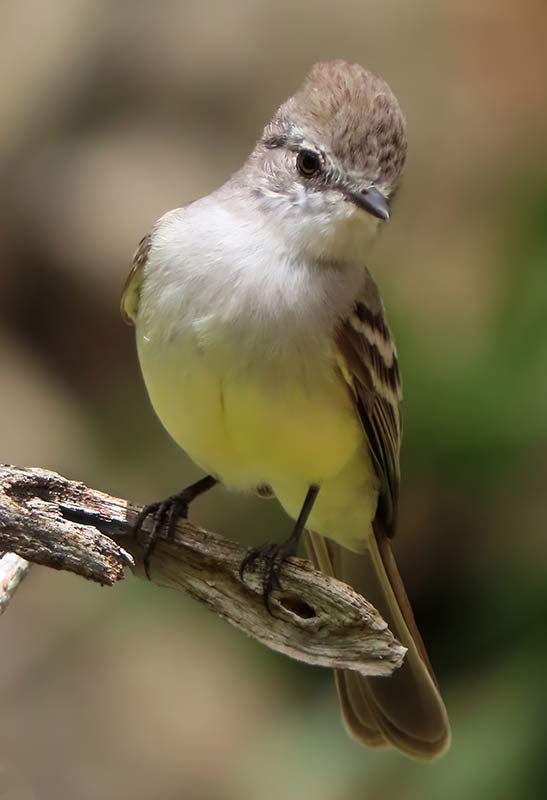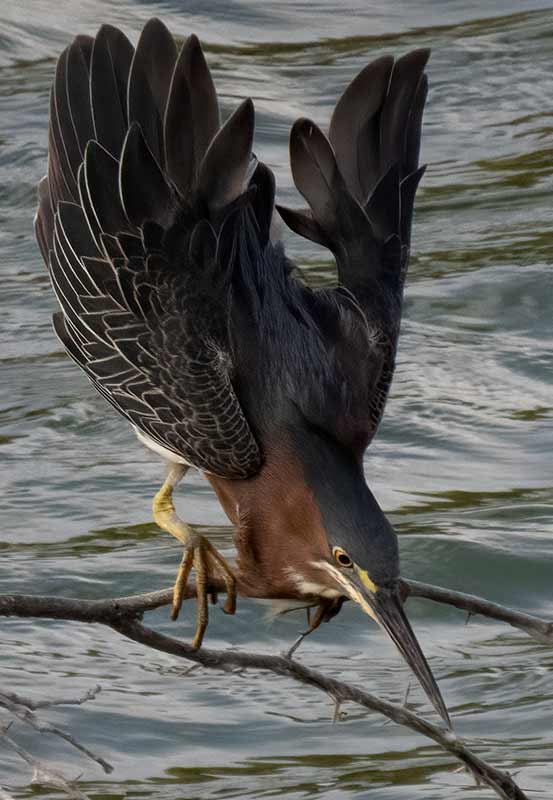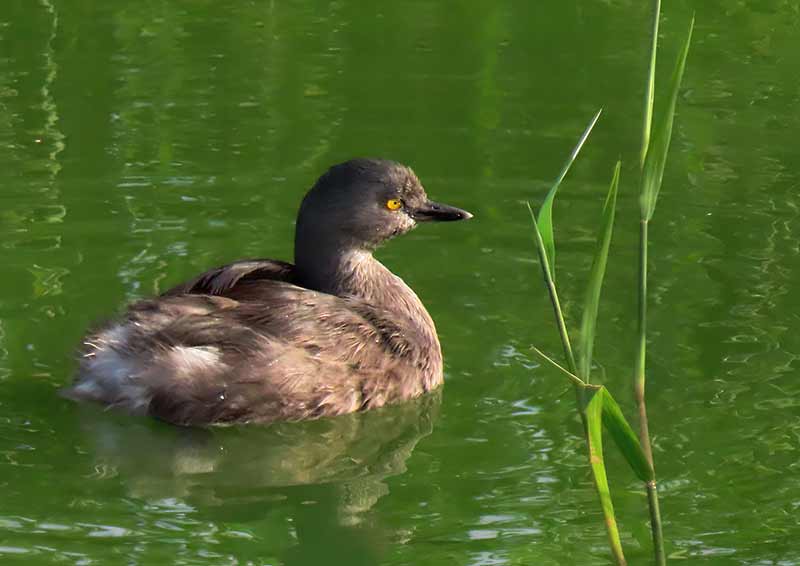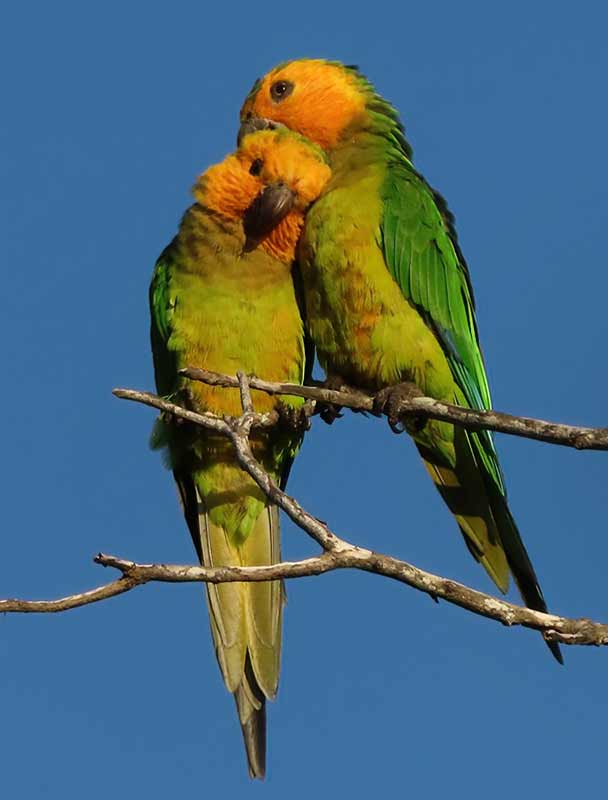Better Bonaire Bird Photography
Top tips that anyone can master.
Posted July 13, 2022
Most visitors to Bonaire want to bring back photographic mementos of their visit to the island, and birders are no exception! Many birders wish to capture the best images that their cameras will allow. In this tutorial, I’ll explain some of the most common methods that anyone can use–no matter the equipment–to improve their Bonaire bird photography.
Approaching birds.
This is often the most overlooked facet of getting close to your birds. When approaching wild birds, it is important to respect their space and not scare them. You should never chase after them, or even move directly towards them. If you want to get really close to a bird, you need to wait until it feels comfortable enough to approach you or allow you to approach it without fear.
Focus on the bird’s face and body language. Make sure that the bird looks relaxed and calm. With a little practice, you can start reading their cues.
Some species are very tolerant of humans, while others will scatter in a heartbeat. Knowing which birds you can easily approach is helpful, although many times that is a matter of experience. Here on Bonaire, American Flamingos can be very skittish. If you are near to them along the road, consider using your vehicle as a blind and shooting from within.
Don’t wear white, or pink or red for that matter.
When we are in their environment, we want to try to blend in as much as possible. Wearing white, or other bright colors, simply puts us more in the limelight. The birds know the minute we arrive on the scene, but if we are not constantly reminding them of our presence by being a big white blob moving along, they tend to forget about us and continue their normal activities. At the risk of looking like some mercenary, I personally prefer to wear camouflage when birding on the trail.
Don’t act like a predator–move slowly, quietly, and gently.
Predators make a beeline to their prey–they move in quickly and without fanfare. If you do the same, your bird will be sure to think it is under attack and hightail it off to safer areas. Maybe the best you’ll get is a butt shot of that rare bird.
So, how do you approach your subject without alarming it?
- Don’t change the speed of your walk. Slowing down greatly or hurrying up simply telegraphs that something has changed–you’ve spotted a photography subject. If you must change speed, simply gently slow down and do not make any sudden moves; even raise your camera slowly and deliberately.
- Do not walk directly to your subject. That looks just like a predator approaching! Instead, walk slowly in a zig-zag pattern, or move further away and then return and approach on a slowly closing parallel line.
- Do look around you as you approach and use your peripheral vision to keep an eye on the subject. Staring intently at your intended subject can be seen as a threat, in fact, that is true for many animals, including humans. Just saunter along the way–your subject will be much more comfortable with your approach. Read the signals they send! If the bird is standing upright and watching you, it is already worried. Stop your approach and wait until it is more comfortable and only continue again once the subject is no longer on alert.
Keep noises to a minimum.
Be sure your cell phone is on silent or you will be unhappy when it rings just as you get focused on that rare bird you’ve been stalking!
Another sound that alerts your subjects is from your camera. If your camera allows, switch to a silent shutter, and turn off the focus beep, to keep from alarming the birds in your area.
To improve your Bonaire bird photography, take advantage of Golden Hour–the one hour after sunrise or before sunset.
These magical times truly will enhance your Bonaire bird photography, simply because the sun’s color temperature becomes warm, making your subjects “glow” in the light. Colors such as red, orange, and yellow are enhanced, and the pink of our flamingos here on Bonaire will morph into a deep coral color. Try golden hour photography for the first time, and I guarantee you’ll be hooked. An added bonus is that during the morning and late afternoon golden hours, the birds are also the most active!
Always put the sun at your back.
Do your best to put the sun behind you. With this simple method, the light will beautifully illuminate your subject. Sometimes the birds you wish to photograph might not be positioned to do this. If that is the case, at least try to get the sun at a 90-degree angle.
Get low and shoot up!
Don’t be afraid to get a bit dirty. If you are able, get as low as you can and shoot upward. This little rule of thumb will separate your subject from the busy background of the habitat and provide a more pleasing sky background.
Another advantage to getting low is that your avian subject will feel more comfortable. Not only can you then connect at an eye-to-eye level, but the chance is much less that you will be identified as a potential threat or predator. Your subject will most likely respond well to your getting low on the ground and quickly get back to its normal behaviors.
Blur your background.
If you cannot get low enough to shoot upward, then use your camera settings to your advantage to blur the background. If your camera system allows, use Aperture Priority with a large aperture to reduce the depth of field.
Compose your image effectively.
Many people just place their subject in the center and shoot away. Although this will give a good image of the subject, there are ways to improve the effectiveness of an image’s composition.
Use a tic-tac-toe grid.
This tool for effective composition is called “the rule of thirds.” Essentially, in your mind’s eye, place a tic-tac-toe grid over the image you wish to photograph. The four points where those lines intersect are the most powerful areas of your image. Do your best to place the eye, or another important component of the subject matter, at one of these four intersecting points.
Shoot behaviors, if possible.
Although everyone loves a beautiful portrait of a colorful bird, trying to photograph the bird’s behavior will be much more captivating! Behaviors tell a story, and an image will be stronger if it communicates or educates the viewer.
Remember that patience is a virtue when attempting Bonaire bird photography. Watch the bird and see what it is doing. Perhaps you can catch the Green Heron with a just-caught fish, or a Yellow Oriole weaving its nest.
If there are simply no action shots, instead look to tell a story about the bird’s environment. For example, if you are photographing a Least Grebe, as in the image here, include some grasses; this communicates information about the bird’s habitat to the viewer.
Fill the frame, if possible.
If you are able, filling the frame with your subject bird is ideal. Not only will it give an impactful image, but your camera’s exposure meter will not be fooled by an overly bright sky or dark water that makes up the majority of the image. Filling the frame also means there is less busy background in your image and will help your viewers to focus on the bird.
Know thy subject. Recognize and react to avian cues to anticipate their actions.
Being familiar with the species you wish to photograph should be SOP (Standard Operating Procedure) for any wildlife photography, as the more you know about your subjects, the better your images will be.
Pay attention to the cues your subject is giving. Being able to accurately read these cues will help you be ready for the action when it comes. Much of this comes through experience and observation, but be aware that cues are out there, and use them to your advantage.
Do your research in advance.
- Being able to recognize the birds you see will allow you to capture that rare vagrant bird, which has never before been seen on the island. If you can’t recognize that it is different, then you probably won’t photograph it.
- Learn the calls and songs of the resident birds. Often, you’ll hear the bird before you see it, enabling you to take the time to get an image of a new species.
- Make a list of the birds you’d like to view and photograph. Research where on Bonaire they might be found. Invest in a local bird guide. The local guides know where the birds are, and, although it’s not always 100% possible to find the species you seek, your chances greatly increase with an experienced local guide at your side.
- Birds are fast, so it’s important to anticipate their behaviors to get the shot you want. The more you know about a particular species, the better your chance of capturing the image in your mind’s eye. For example, birds will normally take off into the wind. Here on Bonaire, where the wind is always a factor, keep this in mind if you are hoping to catch a certain species as it takes off.
- If you’re hoping to catch a migrant species, check out the great resources available on eBird. You can even specify Bonaire as a region, and see when a species historically has been present on the island.
Effective shooting techniques which everyone can use to better their Bonaire bird photography.
Focus on the eye and ensure it is exposed properly.
If there is a #1 rule for bird photography, it is to get the eye sharp! If the body is in focus, but the eye is not, the image will not be good. When we communicate with each other, we look into others’ eyes, and this is also the case when we look at a photograph. The bird must look back at us, or the viewer will not connect with your subject.
We discussed earlier that the sun should be behind us, if possible. This simple action will also put that very effective “catchlight” in the eye of the bird, drawing the viewer’s attention to the eye.
Keep your lens cap off.
This might sound rather silly, but when photographing birds, you have to be ready for action in a split second! You might find a rare bird, and taking the time to remove the lens cap might mean the difference between getting the shot, or saying, “Oh well, better luck next time.” Be ready to shoot at all times!
Spray ‘n’ Pray!
One of the bird photographers that I’ve enjoyed spending time with over the years has THE best bird photography philosophy: Spray ‘n’ Pray!
What he means by that saying is that he has his camera system set on Continuous High-Speed Shutter, so when he depresses the shutter to take an image, it might keep shooting for up to ten images, or even more.
While he might end up discarding many of those images, his philosophy definitely increases the odds of getting the perfect shot! If the bird decides to take off while you are shooting, you will get that action. If you are shooting one frame at a time, most likely you won’t be able to react in time to get the shot. Do realize that this method eats up your card quickly–be sure you have a fast, large capacity card if you contemplate trying Spray ‘n’ Pray.
Keep on shooting!
Digital images are free. It won’t cost you a cent to take advantage of every minute a bird might give you. Don’t snap a picture and say, “Okay, I’ve got it.” Work with your subject. Spend the time. Shoot, shoot, and shoot some more. I am always amazed that when I look at the images of an avian subject, it is always the LAST image I took that ends up being the keeper!
Get out and bird!
In summary, the best method to improve your Bonaire bird photography is to practice–get outside with your camera and go birding! It’s rather like the lottery–you can’t win if you don’t play! So on your next visit to Bonaire, grab your camera and take a ride. I promise you’ll be flabbergasted at the avian photographic possibilities if you just open your eyes!
About the author:
 Susan has been living on Bonaire for over 30 years. She is a certified bird guide, as well as a topside and underwater photographer. She is a 2016 graduate of the Caribbean Birding Trail Interpretive Guide Course conducted by BirdsCaribbean.
Susan has been living on Bonaire for over 30 years. She is a certified bird guide, as well as a topside and underwater photographer. She is a 2016 graduate of the Caribbean Birding Trail Interpretive Guide Course conducted by BirdsCaribbean.
Get in touch with Susan
Contact Susan via email, Facebook Messenger, call Susan or use the online form below.
If you have any questions about your Bonaire birding tour, feel free to contact Susan for answers. She is always willing to go into more detail about routes or the best times for a tour based on your personal preferences. Tours can be tailored to your interests, whether that be birds, photography, or both!
It is also a good idea to do some homework on the birds of Bonaire before you come. Knowing a little about the birds you might encounter on your tour will make your experience even more enjoyable!
Be sure to check out these resources for birding on Bonaire. Also, reading the Bird Blog will introduce you to the birds that might be observed on Bonaire.
Get In Touch
Get in touch with Susan to check availability for the dates you are visiting Bonaire.
Consent: By using this form you agree with the storage and handling of your data by this website.


